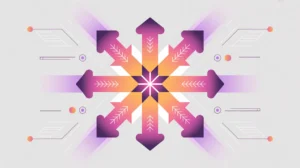Importance of Sustainability and Sunsetting Plans
Sustainability and Sunsetting Plans refer to the strategies organizations use to ensure digital and AI initiatives remain viable over time, or are responsibly retired when no longer needed. Sustainability focuses on maintaining impact, funding, and technical upkeep. Sunsetting involves planning for the safe, ethical, and transparent closure of systems. Their importance today lies in avoiding the “pilot trap” of short-lived projects while also preventing abandoned technologies from creating risks or wasted investments.
For social innovation and international development, these plans matter because mission-driven organizations must steward limited resources carefully while safeguarding communities from disruptions when systems end.
Definition and Key Features
Sustainability strategies address long-term financing, technical support, governance, and community ownership. Sunsetting plans outline exit strategies, data retention or deletion policies, and transitions for affected users. Both emphasize foresight and responsibility across the lifecycle of digital and AI projects.
They are not the same as scale-up strategies, which focus on growth without planning for eventual decline. Nor are they equivalent to crisis-driven shutdowns, which occur reactively. Sustainability and sunsetting are proactive, intentional approaches to technology lifecycle management.
How this Works in Practice
In practice, sustainability might involve securing multi-year funding for an education AI platform, establishing a support team, and creating local capacity for system maintenance. Sunsetting might involve retiring a humanitarian chatbot responsibly, deleting sensitive data, and notifying users of alternatives. Effective plans often include stakeholder engagement to anticipate long-term needs and to design smooth transitions.
Challenges include overestimating sustainability, neglecting exit planning, and donor models that prioritize launch over maintenance. Mission-driven organizations may also struggle with technical debt, where maintaining outdated systems diverts resources from innovation.
Implications for Social Innovators
Sustainability and sunsetting plans are critical across mission-driven sectors. Health programs must ensure diagnostic AI remains updated and supported, or responsibly retire it to avoid harm. Education initiatives must maintain adaptive platforms or provide alternatives if funding lapses. Humanitarian agencies must sunset digital ID or aid distribution systems carefully to protect vulnerable populations. Civil society groups often push for transparent sunsetting to prevent abandoned systems from leaving behind risks or inequities.
By embedding sustainability and sunsetting into their planning, organizations ensure that AI and digital tools deliver lasting value while protecting communities when systems reach the end of their lifecycle.







